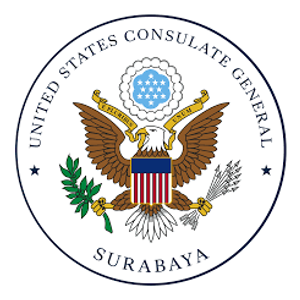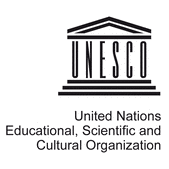Wayang Wong in Tejakula Village, Buleleng has received UNESCO recognition as an intangible cultural heritage. Wayang Wong is an ancient mask art dating back to the Middle Ages. In Tejakula itself, the Wayang Wong standard uses Ramayana characters. There is also another kind of wayang wong called Wayang Parwa.
Wayang Wong art in Tejakula Village is a sacred art which is only performed at certain times. These Wayang Wong masks are masks over three centuries old, totaling 175 masks. All the masks are kept at Pamaksan Temple, Tejakula.
Whenever there is a temple ceremony at Kahyangan Tiga Temples, Pamaksan Temple, Ratu Gede Sambangan Temple and Pura Dangka Temple (several ancient temples in Tejakula), this Wayang Wong Mask dance will be performed. Wayang Wong dancers are chosen from generation to generation based on lineage.
You can also watch this Wayang Wong performance outside of holy days. However, the masks used in this performance are duplicate masks, not the original, purified masks.
This Wayang Wong performance is usually held on Galungan Day or on the day of the local temple ceremony. At that time, the nomads usually returned to their hometowns so that the performance of this sacred Wayang Wong will be watched by many people. Because this performance is a combination of medieval Parwa and Gambuh arts, the languages used are Kawi and Sanskrit.
Information about Holiday or Ceremony WayangEnglishdanceIndonesianwayang
Englishpeople fromIndonesianorang
EnglishvillageIndonesiandesa
WayangEnglishdanceIndonesianwayang
Englishpeople fromIndonesianorang
Tejakula
InEnglishinchIndonesianakhiran yg berpadanan dg akhiran –i dl bahasa indonesia
EnglishdanceIndonesianwayang
Englishpeople fromIndonesianorang
EnglishinchIndonesianakhiran yg berpadanan dg akhiran –i dl bahasa indonesia
EnglishepicIndonesianhikayat sang rama
EnglishdanceIndonesianwayang
Englishpeople fromIndonesianorang
Englishpart of mahabarataIndonesianbagian dari mahabarata
Englishtemple, kind of aIndonesian-
Whenever there is temple ceremony at Kahyangan Tiga Temples, PamaksanEnglishtemple, kind of aIndonesian-
EnglishkingIndonesianraja
EnglishbigIndonesianbesar
EnglishtempleIndonesianpura
EnglishinchIndonesianakhiran yg berpadanan dg akhiran –i dl bahasa indonesia
EnglishdanceIndonesianwayang
Englishpeople fromIndonesianorang
EnglishfishIndonesianikan
You can also watch this WayangEnglishdanceIndonesianwayang
Englishpeople fromIndonesianorang
EnglishinchIndonesianakhiran yg berpadanan dg akhiran –i dl bahasa indonesia
Englishlook, seeIndonesianlihat
This WayangEnglishdanceIndonesianwayang
Englishpeople fromIndonesianorang
Englishgalungan dayIndonesianhari raya galungan
EnglishfishIndonesianikan
Englishpart of mahabarataIndonesianbagian dari mahabarata
Englishkind of a balinesse traditional danceIndonesiansalah satu jenis tarian tradisional bali
EnglishlanguageIndonesian-
EnglishinchIndonesianakhiran yg berpadanan dg akhiran –i dl bahasa indonesia
EnglishvillageIndonesiandesa
EnglishalreadyIndonesiansudah
EnglishgetIndonesianmemperoleh
Englishlet'sIndonesianayo
EnglishguardIndonesianpenjaga
EnglishfromIndonesiandari
EnglishasIndonesiansebagai
EnglishheritageIndonesianwarisan
EnglishmaskIndonesiantopeng
EnglishbambooIndonesianlama
Englishto come fromIndonesianasal
EnglishcenturyIndonesianabad
Englishlike thisIndonesianbegini
EnglishuseIndonesianmenggunakan, memakai
EnglishperformanceIndonesianpertunjukkan
EnglishepicIndonesianhikayat sang rama
Englishthere isIndonesianada
EnglishalsoIndonesianjuga
EnglishgroupIndonesianjenis
EnglishbesidesIndonesianlain
EnglishinterpretedIndonesiandisebutkan
Kasenian WayangEnglishdanceIndonesianwayang
Englishpeople fromIndonesianorang
EnglishvillageIndonesiandesa
EnglishgroupIndonesianjenis
English-Indonesiankembali
EnglishopportunityIndonesianwaktu
EnglishpureIndonesianbersih, suci
EnglishonlyIndonesiansaja
Englishlike thisIndonesianbegini
EnglishageIndonesianberumur
EnglishfromIndonesiandari
EnglishthreeIndonesianketiga
EnglishcenturyIndonesianabad
EnglishallIndonesiansemua
Englishthere isIndonesianada
EnglishlackingIndonesiankurang
EnglishmoreIndonesianlebih
Englisha dance in which male performers wear masksIndonesiannama tarian
Englishall togetherIndonesiansemua
EnglishtempleIndonesianpura
Englishtemple, kind of aIndonesian-
Malih pidanEnglishformerlyIndonesiankapan?
EnglishpleaseIndonesiankata penegas yang sepadan dengan -lah dalam bahasa indonesia
Englishthere isIndonesianada
EnglishtempleIndonesianpura
Englishtemple, kind of aIndonesian-
EnglishkingIndonesianraja
EnglishbigIndonesianbesar
EnglishtempleIndonesianpura
EnglishbambooIndonesianlama
EnglishareaIndonesianwilayah
EnglishperformanceIndonesianpertunjukkan
Englisha dance in which male performers wear masksIndonesiannama tarian
EnglishdanceIndonesianwayang
Englishpeople fromIndonesianorang
Englishlike thisIndonesianbegini
EnglishdefiniteIndonesianpasti
EnglishwillIndonesianakan
EnglishrunIndonesiandijalankan
EnglishperformerIndonesianpemeran
Englishaccording toIndonesiansesuai
EnglishfamilyIndonesiankeluarga
IdaEnglishgod, kind of aIndonesiandia
EnglishalsoIndonesianjuga
EnglishsuccessfullyIndonesianselesai dengan baik
EnglishseeIndonesianmenyaksikan
EnglishperformanceIndonesianpertunjukkan
EnglishdanceIndonesianwayang
Englishpeople fromIndonesianorang
Englishlike thisIndonesianbegini
Englishdoesn'tIndonesiantidak
EnglishworldIndonesiandunia
EnglishonlyIndonesianhanya
Englisha dance in which male performers wear masksIndonesiannama tarian
Englishto performIndonesianmenari
EnglishpleaseIndonesiankata penegas yang sepadan dengan -lah dalam bahasa indonesia
EnglishoriginalIndonesianasli
EnglishonlyIndonesiansaja
WayangEnglishdanceIndonesianwayang
Englishpeople fromIndonesianorang
Englishlike thisIndonesianbegini
Englishto performIndonesianmenari
Englishgalungan dayIndonesianhari raya galungan
EnglishopportunityIndonesianwaktu
EnglishrelativeIndonesianhubungan keluarga yg agak jauh
EnglishstayIndonesiantinggal
EnglishusuallyIndonesianbiasanya
EnglishbackIndonesiankembali
EnglishreturnIndonesianpulang
Englishbecause ofIndonesiansebabnya
EnglishperformanceIndonesianpertunjukkan
EnglishsacredIndonesiankeramat
EnglishwillIndonesianakan
EnglishmanyIndonesianbanyak
Englishby means ofIndonesianoleh
EnglishbecauseIndonesiankarena
EnglishonlyIndonesiansaja
Englishpart of mahabarataIndonesianbagian dari mahabarata
Englishkind of a balinesse traditional danceIndonesiansalah satu jenis tarian tradisional bali
EnglishfromIndonesiandari
EnglishcenturyIndonesianabad
EnglishspiceIndonesianbumbu
EnglishlanguageIndonesian-
Englishlet'sIndonesianayo
Information about Holiday or Ceremony
Wayang Wong ring Desa Tejakula
Wayang wong BAsabali wiki.jpg
Where did this ceremony take place:
Tejakula
In English
Wayang Wong in Tejakula Village, Buleleng has received UNESCO recognition as an intangible cultural heritage. Wayang Wong is an ancient mask art dating back to the Middle Ages. In Tejakula itself, the Wayang Wong standard uses Ramayana characters. There is also another kind of wayang wong called Wayang Parwa.
Wayang Wong art in Tejakula Village is a sacred art which is only performed at certain times. These Wayang Wong masks are masks over three centuries old, totaling 175 masks. All the masks are kept at Pamaksan Temple, Tejakula.
Whenever there is a temple ceremony at Kahyangan Tiga Temples, Pamaksan Temple, Ratu Gede Sambangan Temple and Pura Dangka Temple (several ancient temples in Tejakula), this Wayang Wong Mask dance will be performed. Wayang Wong dancers are chosen from generation to generation based on lineage.
You can also watch this Wayang Wong performance outside of holy days. However, the masks used in this performance are duplicate masks, not the original, purified masks.
This Wayang Wong performance is usually held on Galungan Day or on the day of the local temple ceremony. At that time, the nomads usually returned to their hometowns so that the performance of this sacred Wayang Wong will be watched by many people. Because this performance is a combination of medieval Parwa and Gambuh arts, the languages used are Kawi and Sanskrit.
In Balinese
Wayang Wong ring Desa Tejakula, Buleleng sampun ngamolihang uratian lan pangraksa saking UNESCO pinaka warisan budaya tak benda. Wayang Wong inggih punika kasenian tapel lawas sane mawit ring satawarsa tengahan. Ring Tejakula, pakem Wayang Wong puniki nganggen pakem sasolahan Ramayana. Wenten taler Wayang Wong soroh lianan sane kabaos Wayang Parwa.
Kasenian Wayang Wong ring Desa Tejakula ngranjing ring soroh kasenian wali utawi sakral sane kasolahang ring galah rahina suci kemanten. Tapel-tapel Wayang Wong puniki inggih punika topeng-topeng mayusa lewihan saking tigang satawarsa sane makasami kaketek wenten kirang langkung 175 topeng. Sami topeng punika kalinggihang ring Pura Pamaksan, Tejakula.
Malih pidan ja wenten piodalan ring Pura Kahyangan Tiga, Pura Pamaksan, Pura Ratu Gede Sambangan miwah Pura Dangka akudang pura lawas ring wewidangan Tejakula , sasolahan Topeng Wayang Wong puniki janten pacang kamargiang. Para pragina Wayang Wong puniki kapilih manut lalintihan pratisantana kulawarga.
Ida dane taler prasida nyaksiang sasolahan Wayang Wong puniki yening nenten nuju rahina jagat. Kewanten, topeng sane kaanggen masolah nenten ja topeng sane asli. Sane kaanggen masolah wantah duplikatnyane.
Wayang Wong puniki lumrahnyane masolah ritatkala rahina Galungan utawi rahina piodalan ring pura-pura sawewengkon Tejakula. Ring galah punika, wargi sane nongos doh biasane mawali mulih. Nika mawinan sasolahan Wayang Wong sane tenget puniki pacang akeh kasaksiang olih wargine. Riantukan sasolahan puniki wantah campuran kasenian Parwa miwah Gambuh saking satawarsa tengahan, basa sane kaanggen ritatkala masolah inggih punika basa Kawi lan Sansekerta.
Wayang Wong di Desa Tejakula, Buleleng sudah mendapatkan pengakuan UNESCO sebagai warisan budaya tak benda. Wayang Wong adalah kesenian topeng kuno yang berasal dari abad pertengahan. Di Tejakula sendiri, pakem Wayang Wong memakai tokoh-tokoh Ramayana. Ada pula wayang wong jenis lain yang disebut Wayang Parwa.
Kesenian Wayang Wong di Desa Tejakula termasuk dalam kesenian sakral yang hanya dipentaskan pada waktu-waktu tertentu. Topeng-topeng Wayang Wong ini adalah topeng-topeng berusia lebih dari tiga abad yang semuanya berjumlah 175 topeng. Semua topeng itu disimpan di Pura Pamaksan, Tejakula.
Kapan pun ada piodalan di Pura Kahyangan Tiga, Pura Pamaksan, Pura Ratu Gede Sambangan dan Pura Dangka (beberapa pura kuno di Tejakula), tarian Topeng Wayang Wong ini akan dipentaskan. Para penari Wayang Wong dipilih secara turun-temurun berdasarkan garis keturunan.
Anda juga dapat menyaksikan pementasan Wayang Wong ini di luar hari-hari suci. Akan tetapi, topeng yang digunakan dalam pementasan ini adalah topeng duplikat, bukan topeng asli yang disucikan.
Pementasan Wayang Wong ini biasanya dilakukan pada hari raya Galungan atau pada hari piodalan pura setempat. Pada saat itu, warga perantau biasanya pulang kampung sehingga pementasan Wayang Wong yang sakral ini akan ditonton banyak orang. Karena Pementasan ini adalah gabungan dari kesenian Parwa dan Gambuh dari abad pertengahan, bahasa yang digunakan adalah bahasa Kawi dan Sanskerta.







Enable comment auto-refresher